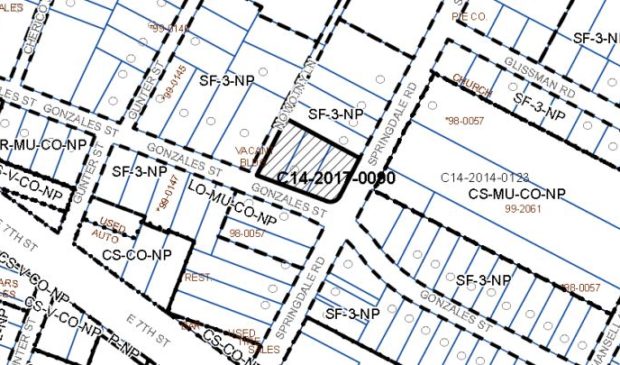The battle over conditional overlays
Wednesday, February 14, 2018 by
Jack Craver City Council Member Jimmy Flannigan is fed up with conditional overlays.
Conditional overlays – COs in the parlance of City Hall insiders – are zoning rules that apply to a specific property. They often end up included as part of a negotiation between a developer and nearby residents in a zoning case, whereby the developer gets the requested upzoning in return for agreeing to certain conditions, such as a height limit on the building or a prohibition of certain uses.
To Flannigan, the thousands of COs that exist throughout the city embody everything that is wrong with Austin’s current Land Development Code. At the most recent Council meeting, he pulled a number of zoning cases off the consent agenda because they included COs, forcing debate on cases that normally would have been approved unanimously.
Among the cases Flannigan highlighted was one involving a property in Great Hills Station, a strip mall at the intersection of Great Hills Trail and Research Boulevard. The conditional overlay specified 23 different prohibited uses, including adult-oriented businesses, funeral services, convenience storage and veterinary services.
“Why can’t a vet open up in a strip mall? They do everywhere,” Flannigan later said in an interview with the Austin Monitor.
The fact that the property owner agreed to the conditions doesn’t make the situation much better from Flannigan’s perspective. Their business may be temporary, but the restrictions on the parcel will exist long after they leave – as many businesses do. When somebody new buys the property, they may have to go through a lengthy zoning case to get the necessary entitlements.
Doing so either requires significant knowledge of Austin’s byzantine code or money to hire a lobbyist who will do it for you.
Recently, Flannigan said, a developer seeking to build an apartment complex at Airport Boulevard and Bolm Road told him that he had to spend $150,000 to get a conditional overlay removed that prohibited driveway access onto Airport.
“If we want developers to build housing that is more affordable, why are we forcing them to give $150,000 to lobbyists upfront?” he asked.
Flannigan’s protests against COs did not elicit much support on the dais, with only Council Member Ellen Troxclair joining him in voting against the cases. Mayor Steve Adler said that he understood Flannigan’s argument, but that he hoped the issue would be addressed in the context of CodeNEXT.
The third draft of CodeNEXT that was released on Monday does get rid of COs – sort of. The code authors took a large number of properties that have substantially similar COs and developed a new zoning category that reflects those conditions. Another large group of COs with unusual conditions will remain. However, the proposed code does not put in place a system for new COs. Instead, when Council receives a request for a zoning change, it will either have to approve or reject the requested zoning category, rather than essentially customizing the zoning through a conditional overlay.
There are likely some members of Council, however, who would like to see COs remain because they view them as a useful tool to broach compromise and avoid what might otherwise be a controversial zoning fight.
“We need to make sure that our land use decisions offer flexibility,” said Mayor Pro Tem Kathie Tovo.
Nuria Zaragoza, who recently left the Planning Commission, said that COs are a way to prevent uses that aren’t “compatible” with the surrounding area. The large number of COs, she said, is the result of zoning categories that are too broad and don’t make enough distinctions between different uses.
Zaragoza agrees, however, that the process of documenting COs should change. She said the city should make it easier for property owners or those considering buying a property to look up the zoning for the parcel, so they can know right away whether they’re able to do what they want with the land.
“I can’t imagine there isn’t a college student right now who couldn’t figure out how to make it more readily accessible,” she said.
The Austin Monitor’s work is made possible by donations from the community. Though our reporting covers donors from time to time, we are careful to keep business and editorial efforts separate while maintaining transparency. A complete list of donors is available here, and our code of ethics is explained here.
You're a community leader
And we’re honored you look to us for serious, in-depth news. You know a strong community needs local and dedicated watchdog reporting. We’re here for you and that won’t change. Now will you take the powerful next step and support our nonprofit news organization?



